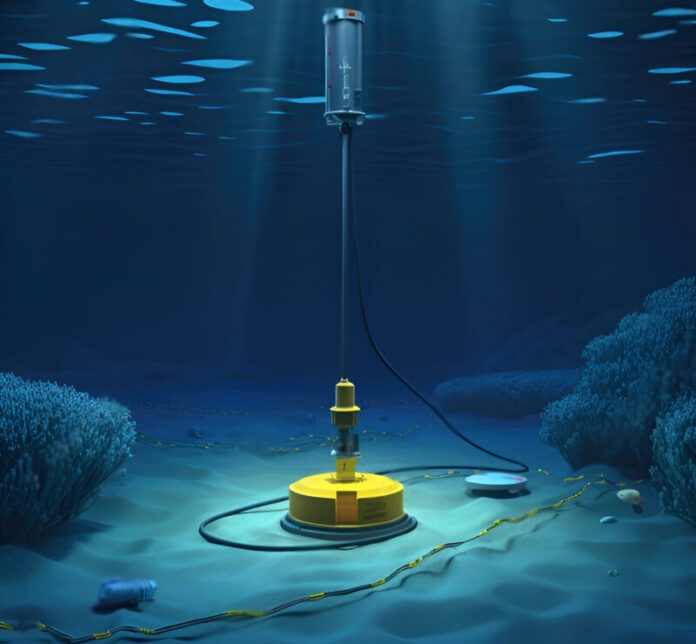Seismic surveys are crucial for subsurface imaging in the oil and gas industry, as well as for various scientific investigations of the ocean floor. These surveys relied heavily on hydrophones towed behind research vessels. However, with the widespread adoption of Ocean Bottom Nodes (OBNs) – a revolutionary approach offering significant advantages over conventional techniques.
The Advantages of Ocean Bottom Nodes
The adoption of OBNs in seismic surveys offers a multitude of benefits, impacting various aspects of the exploration and production lifecycle. Here are the key advantages of using OBNs for seismic surveys:
i.) Superior Data Quality: Enhanced Resolution and Signal-to-Noise Ratio
One of the most significant advantages of OBNs lies in their ability to deliver superior data quality. Unlike towed streamers, which are subject to noise from the vessel and water surface, OBNs are deployed directly on the seabed. This proximity to the subsurface significantly reduces noise interference, resulting in an improved signal-to-noise ratio.
This improved ratio translates directly into clearer images with higher resolution, revealing subtle geological features that might be missed by traditional methods. The enhanced resolution enables more precise interpretations of subsurface structures, leading to better reservoir characterization and reduced exploration risk.
Furthermore, OBNs are capable of recording data in three dimensions (3D), capturing a more complete picture of the subsurface than 2D streamer data. This 3D imaging capability provides a detailed understanding of fault planes, reservoir boundaries and other complex geological features, which are critical for accurate reservoir modeling and production optimization. The improved signal fidelity also allows for the detection of subtle changes in subsurface properties, contributing to a better understanding of the reservoir’s fluid content and its overall productivity potential.
ii.) Broader Azimuthal Coverage: Illuminating Subsurface Structures from Multiple Angles OBNs offer a broader azimuthal coverage compared to traditional streamer surveys. While streamers acquire data primarily along a single line, OBNs record seismic waves arriving from all directions.
This multi-azimuthal acquisition provides a more comprehensive and complete view of the subsurface, particularly valuable in complex geological settings. The multiple angles of incidence enable better illumination of subsurface structures, reducing ambiguity in interpretation and improving the accuracy of reservoir characterization. This broad azimuthal coverage is particularly advantageous in areas with complex faulting or where subtle stratigraphic features need to be resolved.
The improved illumination also leads to better imaging of complex subsurface features such as salt bodies or steeply dipping formations. These features can be challenging to image with conventional seismic techniques, often resulting in artifacts and inaccuracies in the final image. However, with OBNs, these features can be more accurately mapped, allowing for more confident decision-making in exploration and development planning.
iii.) Increased Flexibility and Efficiency: Adaptability to Challenging Environments
OBNs offer greater flexibility and efficiency in acquisition compared to traditional streamer surveys. They can be deployed in various water depths and challenging environments, including areas with strong currents or rough sea conditions where streamer surveys may be impractical or impossible.
Once deployed, the nodes remain on the seabed autonomously recording data, freeing the vessel to perform other tasks or conduct other surveys simultaneously, increasing overall efficiency. This adaptability reduces downtime and minimizes weather-related delays, leading to significant cost savings.
Moreover, OBNs can be deployed and retrieved using different methods suited to various environmental conditions. This flexibility allows for surveys in areas previously inaccessible with conventional streamer technology, expanding the exploration potential in challenging offshore environments. The ability to deploy and retrieve nodes strategically minimizes the environmental impact compared to continuous towing of long streamers.
iV.) Improved Repeatability and 4D Seismic Monitoring: The ability to repeatedly deploy and retrieve OBNs makes them ideal for 4D (time-lapse) seismic monitoring. This technique involves acquiring repeated seismic surveys over time to monitor changes in reservoir properties during production. The improved repeatability of OBN surveys enables more accurate tracking of these changes, providing valuable information for optimizing production strategies and enhancing reservoir management.
The high-quality data acquired by OBNs provides a more sensitive measurement of these changes, leading to more reliable insights into reservoir behavior.
This monitoring capability is invaluable for optimizing production strategies, assisting in identifying bypassed hydrocarbons and predicting future reservoir performance. The information obtained through 4D seismic monitoring helps to maximize recovery rates and extend the life of producing oil and gas fields.
Applications Beyond Exploration
The versatility of Ocean Bottom Nodes extends beyond hydrocarbon exploration. They are increasingly used in other geophysical applications, including:
Geotechnical Site Surveys: OBNs can provide high-resolution data for geotechnical investigations, crucial for the design and construction of offshore infrastructure.
Environmental Monitoring: OBNs can be used to monitor seabed conditions and detect potential environmental hazards.
Oceanographic Research: The data acquired by OBNs can contribute to a better understanding of oceanographic processes.
More Effective Game Plan
The advantages of ocean bottom nodes, translate into more accurate subsurface imaging, reduced exploration risk and optimized production strategies. Their long-term benefits in terms of improved data quality, reduced operational costs, and enhanced reservoir understanding, make it a compelling choice for modern seismic surveys. The adoption of OBNs for seismic surveys will likely become even more widespread, leading to a better understanding of the Earth’s subsurface and enabling more informed decisions in the energy industry and beyond.



